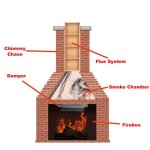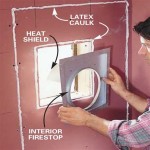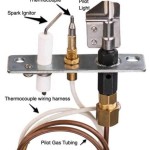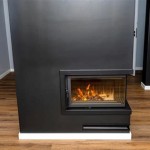Fireplace Insert Wood Stove Reviews: A Comprehensive Guide
Choosing a fireplace insert wood stove can be a complex process. Numerous models are available, each boasting different features, efficiency ratings, and heating capacities. This article provides a comprehensive overview to assist in making an informed decision by examining key factors, common models, and considerations for installation.
Understanding the Benefits of a Fireplace Insert Wood Stove
A fireplace insert wood stove offers several advantages over traditional open fireplaces. These advantages primarily stem from enhanced efficiency and improved safety. An open fireplace typically loses a significant amount of heat up the chimney, resulting in low heating efficiency and increased energy costs. Fireplace inserts, on the other hand, are designed to capture and radiate heat more effectively into the room, significantly improving heating efficiency.
Safety is another critical benefit. Open fireplaces can pose a higher risk of sparks and embers escaping, leading to potential fire hazards. Fireplace inserts are enclosed units that reduce the risk of these hazards. Furthermore, newer models often incorporate advanced combustion technologies, reducing emissions and contributing to better air quality.
Beyond efficiency and safety, aesthetic appeal is also a factor. Many modern fireplace inserts are designed to complement existing décor and add a touch of elegance to a living space. They offer a variety of styles and finishes, allowing homeowners to choose a model that suits their personal preferences.
Key Features to Consider When Selecting a Fireplace Insert
Selecting the right fireplace insert involves carefully evaluating several key features. These features directly impact the unit's performance, efficiency, and suitability for a specific home.
Heating Capacity: The heating capacity, measured in BTUs (British Thermal Units), indicates the amount of heat the insert can produce. It's crucial to choose an insert with a heating capacity that matches the size of the area you intend to heat. Overestimating can lead to uncomfortable overheating, while underestimating will result in inadequate heating. Manufacturers typically provide guidance on the appropriate heating capacity based on square footage.
Efficiency Rating: The efficiency rating represents the percentage of fuel energy that is converted into usable heat. A higher efficiency rating signifies less wasted energy and lower fuel consumption. Modern EPA-certified inserts often boast efficiency ratings of 70% or higher, making them significantly more efficient than older models or open fireplaces.
Firebox Size: The firebox size determines the maximum log length that can be accommodated. A larger firebox allows for longer burn times and reduces the need for frequent refueling. However, a larger firebox may also require more wood and could be less efficient if not properly loaded.
Emissions: The Environmental Protection Agency (EPA) sets emission standards for wood-burning appliances. Look for inserts that are EPA-certified, indicating that they meet stringent emission limits and contribute to cleaner air. Lower emission levels also often correlate with higher efficiency.
Material and Construction: The material and construction quality significantly impact the insert's durability and longevity. Cast iron and steel are common materials used in fireplace inserts. Cast iron offers excellent heat retention, while steel provides strength and resistance to warping. High-quality welds and durable finishes are essential for withstanding the high temperatures and demanding conditions associated with wood burning.
Blower Fan: Many fireplace inserts are equipped with a blower fan that circulates heated air throughout the room. A blower fan can significantly improve heat distribution and increase the overall heating effectiveness of the insert. Look for models with variable speed settings to control the airflow and noise level.
Air Wash System: An air wash system uses a stream of air to keep the glass door clean and clear, providing an unobstructed view of the fire. This feature enhances the aesthetic appeal of the insert and reduces the need for frequent cleaning.
Warranty: A comprehensive warranty provides assurance of the manufacturer's confidence in the product's quality and durability. Pay attention to the warranty terms and coverage, including the duration and specific components that are covered.
Examining Popular Fireplace Insert Wood Stove Models
Numerous fireplace insert wood stove models are available on the market, each with its unique features and specifications. This section examines a few popular models, highlighting their strengths and weaknesses.
Englander 13-NC: The Englander 13-NC is a popular choice for its affordability and reliable performance. It features a relatively small firebox, making it suitable for smaller to medium-sized rooms. It's EPA-certified and offers a decent efficiency rating. However, it may lack some of the advanced features found in higher-end models.
Napoleon EPI3T: The Napoleon EPI3T is a mid-range option that offers a good balance of features and performance. It features a larger firebox, allowing for longer burn times. It also includes a blower fan and an air wash system. Its design is aesthetically pleasing and can complement a variety of décor styles.
Lopi Evergreen: The Lopi Evergreen is a premium fireplace insert known for its high efficiency and clean-burning capabilities. It's EPA-certified and boasts a high efficiency rating. It features a large firebox, a blower fan, and an air wash system. It's a more expensive option but offers superior performance and durability.
Regency I2450: The Regency I2450 is a powerful and efficient insert designed for larger spaces. It boasts a high BTU output and a large firebox. It features a variable-speed blower and a user-friendly air control system. While it is a more substantial investment, it provides excellent heating performance and long-term reliability.
Vogelzang TR004 Colonial EPA Wood Stove Insert: The Vogelzang TR004 is a budget-friendly option for those seeking supplemental heat. It is EPA-certified but offers a smaller heating capacity suitable for smaller rooms or as a zone heating solution. Its simplicity and affordability make it an appealing choice for those on a restricted budget.
Important Considerations for Installation and Maintenance
Proper installation is crucial for the safe and efficient operation of a fireplace insert wood stove. It is highly recommended to hire a qualified professional to handle the installation process.
Chimney Inspection and Cleaning: Before installing an insert, the existing chimney must be thoroughly inspected and cleaned. Creosote buildup can pose a fire hazard and reduce the chimney's draft. A professional chimney sweep can ensure that the chimney is in good condition and meets the necessary safety standards.
Proper Sizing: The fireplace insert must be properly sized to fit the existing fireplace opening. Incorrect sizing can lead to inefficient heating and potential safety issues. A professional installer can accurately measure the fireplace opening and recommend the appropriate insert size.
Flue Connection: The insert must be properly connected to the chimney flue. A secure and airtight connection is essential for preventing smoke and carbon monoxide from entering the living space. A stainless steel liner is often recommended to improve the chimney's draft and prevent corrosion.
Clearances: Proper clearances must be maintained between the insert and surrounding combustible materials. These clearances are specified by the manufacturer and are essential for preventing fire hazards. A professional installer will ensure that the insert is installed in accordance with these clearance requirements.
Regular Maintenance: Regular maintenance is essential for ensuring the safe and efficient operation of the fireplace insert. This includes regularly cleaning the chimney to remove creosote buildup, inspecting the door seals and gaskets, and checking the blower fan for proper operation. Following the manufacturer's instructions for maintenance will help prolong the life of the insert and prevent potential problems.
Wood Selection: The type of wood burned significantly impacts the insert's performance and emissions. Seasoned hardwoods, such as oak, maple, and birch, are the best choices for burning in a wood stove. Avoid burning softwoods, such as pine and fir, as they tend to produce more creosote. Also, never burn treated wood, painted wood, or trash, as these materials can release harmful pollutants into the air.
By carefully considering these factors and selecting the right fireplace insert, homeowners can enjoy the warmth and ambiance of a wood fire while improving heating efficiency and enhancing home safety.

Ashley Hearth S 26 In 1 200 Sq Ft Epa Certified Wood Burning Fireplace Insert Aw1820e The Home Depot

Osburn 2000 Black Epa Wood Stove Insert Review Forestry Reviews

Top 5 Reasons To Consider A Fireplace Inserts Wi Ia Il

Osburn 3500 Wood Burning Fireplace Insert 31 Ob03510 Hvacdirect Com

Osburn 3500 Wood Stove Insert With Blower Epa Approved Review Forestry Reviews

What Will Make Your Fireplace Energy Efficient Rockford Chimney

Fireplace Inserts Gas Wood Pellet Electric Best Fire Hearth Patio

Ventis Hei240 Wood Burning Insert Rockford Chimney

Napoleon Wood Stove Insert Fireplace With Blower

Lopi Premium Wood Fireplace Inserts Custom Hearth Fireplaces And Stoves
Related Posts








